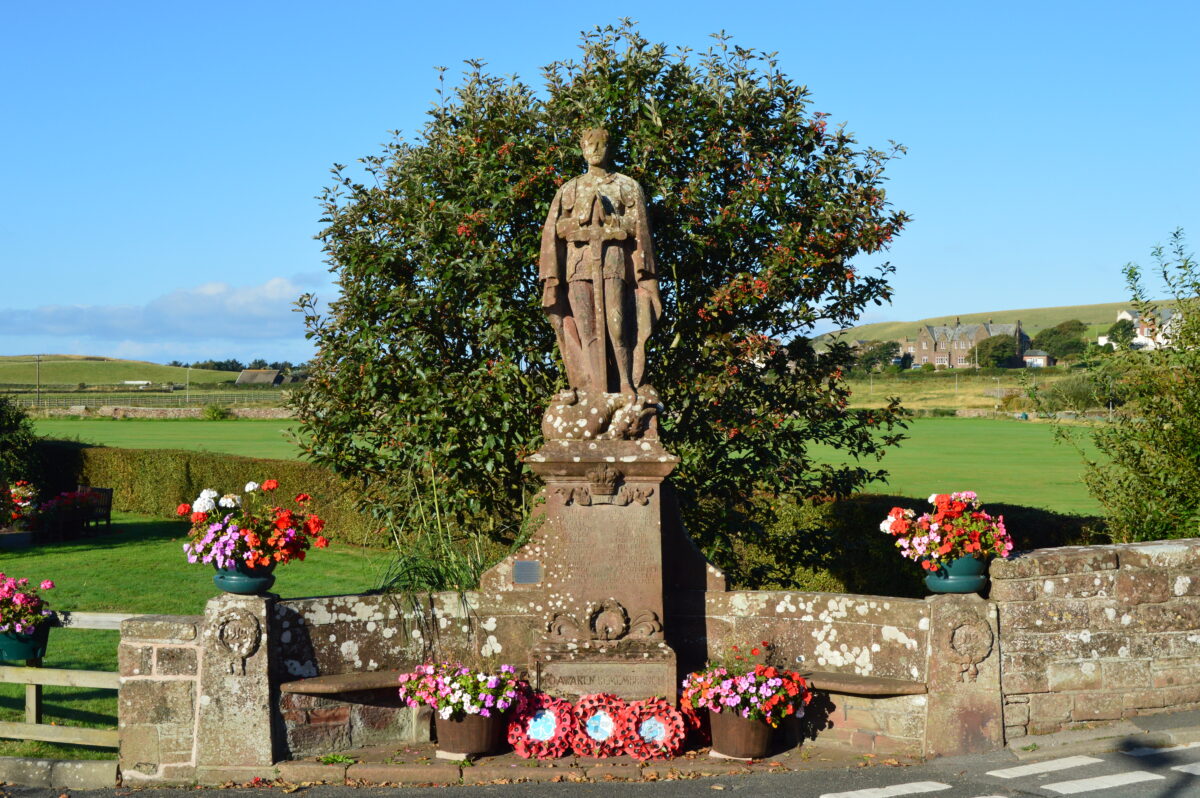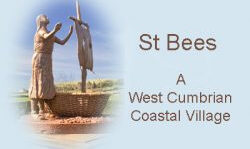Sculptures
Josefina de Vasconcellos – at St Bees Priory
Josefina de Vasconcellos was born in 1904, the only child of a Brazilian Diplomat, Hippolyta de Vasconcellas, and Freda Coleman, who came from an English Quaker family. She is a younger contemporary of Barbara Hepworth and Henry Moore, and after the First World War she studied at the Regent Street Polytechnic, then in Paris and Florence. She has lived since the 1930’s in Cumbria.
Her best-known work is “Reconciliation”, which has various versions in the Hiroshima peace park, Coventry Cathedral, on the site of the Berlin Wall, and Stormont Castle.
The “Vision of St. Bega” was unveiled on 6th September 1955 in the Bega Chapel at St Bees Priory. On the right is the kneeling figure of St. Bega, and on the left is the Virgin and Child.
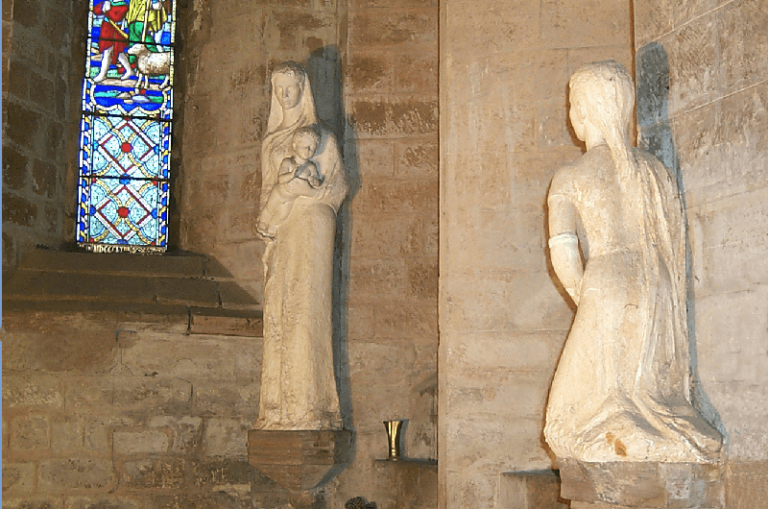
Josefina de Vasconcellos - St Bees School
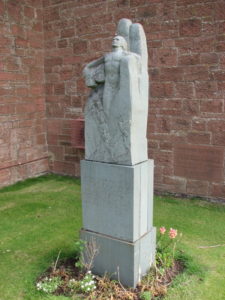
Carved from Green Buttermere slate, this two metre high sculpture was executed by Josefina de Vasconcellos in the early 1950’s, and is sited next to the entrance of the Memorial Hall at St. Bees School. The Hall was erected in memory of those former pupils and staff of St. Bees School who gave their lives in the Second World War.
The Hand is at the bottom of the steps along Wood Lane opposite the Headmaster’s House.
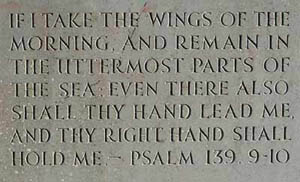
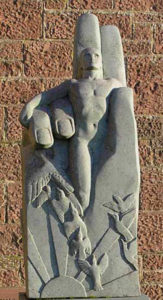
Close up of sculpture above pedestal
Colin Telfer – at the Beck Edge Garden
Colin Telfer worked at the West Cumbrian pits for 20 years. He was a winder/engine man working on the pit top, with experience at Risehow, Lowca and Solway collieries, and he also worked for a time at Distington Engineering at Workington.
After being made redundant, he enrolled on a two-year course at Carlisle art college – now the Cumbria Institute – to retrain as a sign-writer. While there he started to play around with clay and soon developed his own ideas, making small mining sculptures using coal dust.
About 15 years ago he received his first major contract at Egremont and has been sculpting ever since. Most of his work is made from a mixture of iron ore dust from Florence Mine in Egremont, and resin. Others also include slate or coal.
Colin’s figures start life as a wooden framework, covered in foam filler, then clay which he buys from Wetheriggs Pottery. They are sanded, rubbed down with wire wool then finished with Colin’s own-recipe coating mixture which contains graphite and slate powder and polishes up to a gleaming finish.
(Text courtesy of Julian Thurgood – Visit Cumbria)
In 2000, as one of the St Bees village Millennium projects, a sculpture was commissioned from Colin Telfer. This was to be of Bega arriving in her small boat from Ireland. This was placed in the Beck Edge garden by the railway station. A time capsule was placed in the base. The shot above shows the sculpture shortly after unveiling.
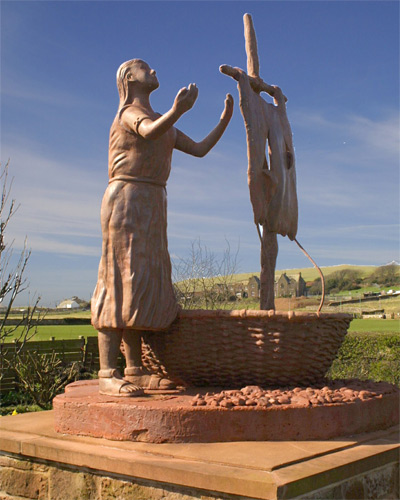
War Memorials
Priory Graveyard – Celtic Cross
The first, and originally the official, memorial is in the Priory graveyard adjacent to the lych gate. The position was decided by a vote of relatives of those who had been killed.
This is a very fine cross in the Northumbrian Celtic school of carving, and was designed by W G Collingwood, John Ruskin’s secretary, a leading authority on this art form.
Collingwood also designed the memorials for Coniston and Hawkshead.
The names of the fallen of World War II are on a stone in the surround. This view shows the memorial today.
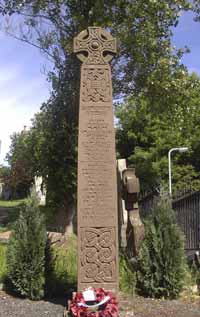
St. George and the Dragon – Facing the station
The Second memorial is “St. George and the Dragon” and stands on a prominent site next to the railway station. This was designed and erected by J D Kenworthy, a local artist who lived at Seacroft House. His son Stanley was killed in 1916.
Kenworthy thought the official memorial lacked impact and should have been sited in a more visible place, hence he designed the St. George sculpture.
The huge block of sandstone was quarried in St. Bees and sculpted in London or Liverpool, where it was executed to Kenworthy’s design.
Both memorials are now “official” and have been looked after by the Parish Council since the 1950’s.
